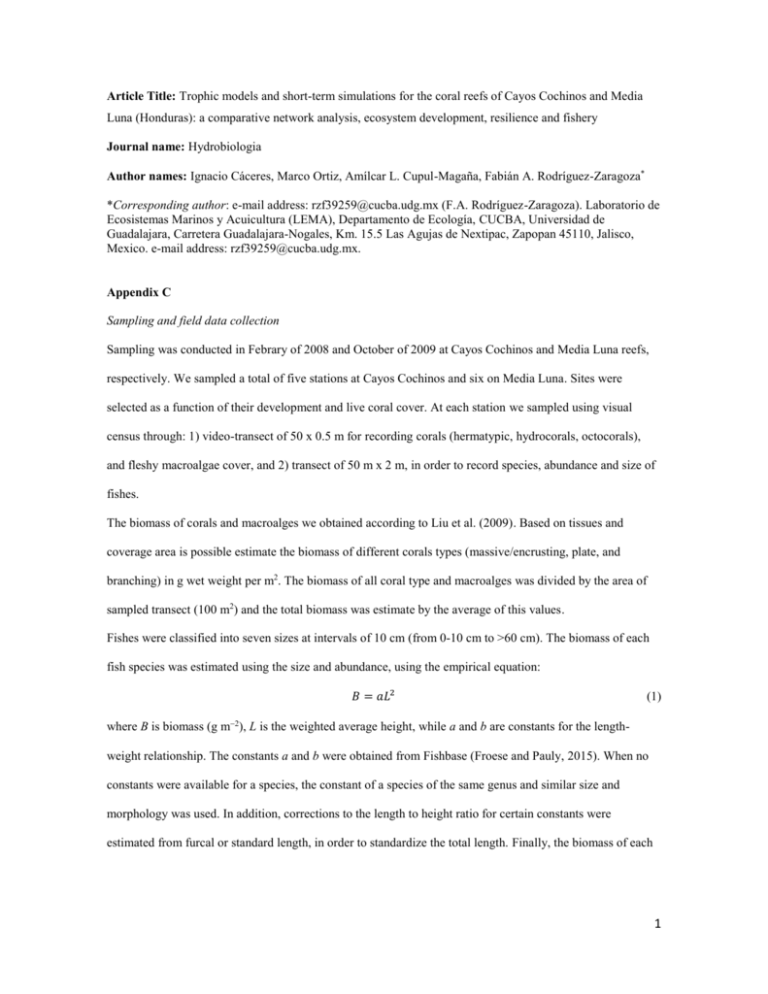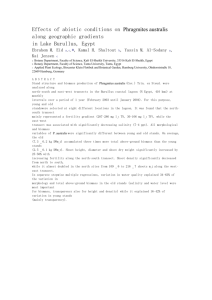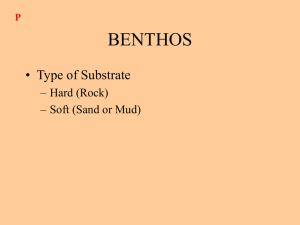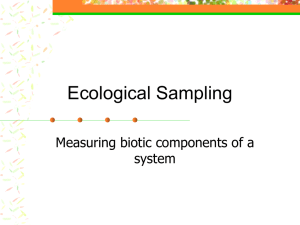Article Title: Trophic models and short
advertisement

Article Title: Trophic models and short-term simulations for the coral reefs of Cayos Cochinos and Media Luna (Honduras): a comparative network analysis, ecosystem development, resilience and fishery Journal name: Hydrobiologia Author names: Ignacio Cáceres, Marco Ortiz, Amílcar L. Cupul-Magaña, Fabián A. Rodríguez-Zaragoza* *Corresponding author: e-mail address: rzf39259@cucba.udg.mx (F.A. Rodríguez-Zaragoza). Laboratorio de Ecosistemas Marinos y Acuicultura (LEMA), Departamento de Ecología, CUCBA, Universidad de Guadalajara, Carretera Guadalajara-Nogales, Km. 15.5 Las Agujas de Nextipac, Zapopan 45110, Jalisco, Mexico. e-mail address: rzf39259@cucba.udg.mx. Appendix C Sampling and field data collection Sampling was conducted in Febrary of 2008 and October of 2009 at Cayos Cochinos and Media Luna reefs, respectively. We sampled a total of five stations at Cayos Cochinos and six on Media Luna. Sites were selected as a function of their development and live coral cover. At each station we sampled using visual census through: 1) video-transect of 50 x 0.5 m for recording corals (hermatypic, hydrocorals, octocorals), and fleshy macroalgae cover, and 2) transect of 50 m x 2 m, in order to record species, abundance and size of fishes. The biomass of corals and macroalges we obtained according to Liu et al. (2009). Based on tissues and coverage area is possible estimate the biomass of different corals types (massive/encrusting, plate, and branching) in g wet weight per m2. The biomass of all coral type and macroalges was divided by the area of sampled transect (100 m2) and the total biomass was estimate by the average of this values. Fishes were classified into seven sizes at intervals of 10 cm (from 0-10 cm to >60 cm). The biomass of each fish species was estimated using the size and abundance, using the empirical equation: 𝐵 = 𝑎𝐿2 (1) where B is biomass (g m2), L is the weighted average height, while a and b are constants for the lengthweight relationship. The constants a and b were obtained from Fishbase (Froese and Pauly, 2015). When no constants were available for a species, the constant of a species of the same genus and similar size and morphology was used. In addition, corrections to the length to height ratio for certain constants were estimated from furcal or standard length, in order to standardize the total length. Finally, the biomass of each 1 individual was then multiplied by the total abundance of individuals and divided by the area of the sampled transect (100 m2). References Froese, R. & D. Pauly. Editors. 2015. FishBase. www.fishbase.org, version (02/2014). Liu, P.J., S. Kwang-Tsao, J. Rong-Quen, F. Tung-Yung, W. Saou-Lien, H. Jiang-Shiou, C. Jen-Ping, C. Chung-Chi & L. Hsing-Juh, 2009. A trophic model of fringing coral reefs in Nanwan Bay, southern Taiwan suggests overfishing. Marine Environmental Research 68: 106–117. 2











